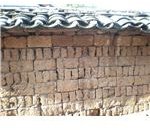WHAT IS FIBRE (FIBRE-REINFORCED) CONCRETE?
FIBRE REINFORCED CONCRETE
Fibre reinforced concrete is a composite material consisting of cement paste, mortar or concrete with closely spaced and uniformly dispersed fibres of polypropylene, nylon, asbestos, coir, glass and carbon (circular or flat).

PROPERTIES
Fibres introduced in concrete impart the following properties:
- Increased static and dynamic tensile strength
- Improved impact strength
- Limited crack growth
- Increased strain capacity
APPLICATIONS
Because of the increased static and dynamic tensile strength, energy absorbing characteristic and better fatigue strength, fibre reinforced concrete has been used in:
- Overlays of air fields, road pavements, industrial floorings and bridges decks etc.
- Canal and refractory linings
- Explosive resistant structures
- Precast products such s pipes, beams, staircase steps, wall panels, proof panels and manhole covers etc.
Types Of Reinforced Concrete
History of Reinforced Concrete
Fibers have been used for concrete reinforcement since prehistoric times though technology has improved significantly, as is applicable for other fields. In the early age, straw and mortar were used for producing mud bricks, and horsehair was used for their reinforcement. As the fiber technology developed, cement was reinforced by asbestos fibers in the early twentieth century.During the middle of the twentieth century, extensive research was in progress for the use of composite materials for concrete reinforcement. Later, the use of asbestos for concrete reinforcement was discouraged due to the detection of health risks. New materials like steel, glass, and synthetic fibers replaced asbestos for reinforcement. Active research is still in progress on this important technology. Fiber Reinforced Concrete is considered to be one of the greatest advancements in the construction engineering during the twentieth century.Glass Fiber Reinforced Concrete (GFRC)
Glass fiber reinforced concrete has been successfully used since the last 25 years for concrete reinforcement, in addition to steel. GFRC is being manufactured into big panels with a simple configuration or into intricate shapes by using special techniques. Originally, GFRC components were anchored directly with the buildings by the use of metal studs. It was revealed that GFRC shifts considerably due to which the direct anchors are being replaced by slip anchors. Several structures use GFRC for dissimilar facing like ceramic tiles, bricks, and architectural purposes.Steel Fiber Reinforced Concrete (SFRC)
Steel fiber reinforced concrete is a composite material that can be sprayed. It consists of hydraulic cements with steel fibers that are dispersed randomly and possess a rectangular cross-section. The steel fibers reinforce concrete by withstanding tensile cracking. The flexural strength of fiber reinforced concrete is greater than the un-reinforced concrete. Reinforcement of concrete by steel fibers is isotropic in nature that improves the resistance to fracture, disintegration, and fatigue. Steel fiber reinforced concrete is able to withstand light and heavy loads.- Natural fiber reinforced concrete (NFRC) consists of cellulose fibers that are processed from pine trees. This category is also producing good results. The recycled carpet waste has been successfully used for concrete reinforcement by using the waste carpet fibers.Polypropylene Fiber Reinforced (PFR) concrete: Polypropylene is a cheap and abundant polymer widely used due to its resistance to forming chemical reactions.Asbestos Fibers: These fibers are cheap and provide the cement with mechanical, chemical and thermal resistance, although the asbestos fiber reinforced concrete appears to have low impact strength.Carbon Fibers: These fibers have been recently used due to their very high modulus of elasticity and flexural strength. Characteristics such as strength and stiffness are better than those of steel fibers, although they are more susceptible to damage.
Engineered Cementitious Composite (ECC)
A fiber reinforced concrete has been developed recently that is called Engineered Cementitious Composite (ECC). It is claimed that this concrete is 40 % lighter than normal concrete, resistance to cracking exceeds 500 times, and strain hardening exceeds several percent strain. Thus, the ductility is significantly greater than normal concrete. It is also known as bendable concrete since it can easily be molded and shaped. It can self-repair minor cracks by the reaction with carbon dioxide and rainwater, making the concrete stronger
Different Types of Fibers Used for Concrete Reinforcement

The content was very interesting, I like this post. Keep it up...
ReplyDeleteSteel Fiber Reinforced Concrete